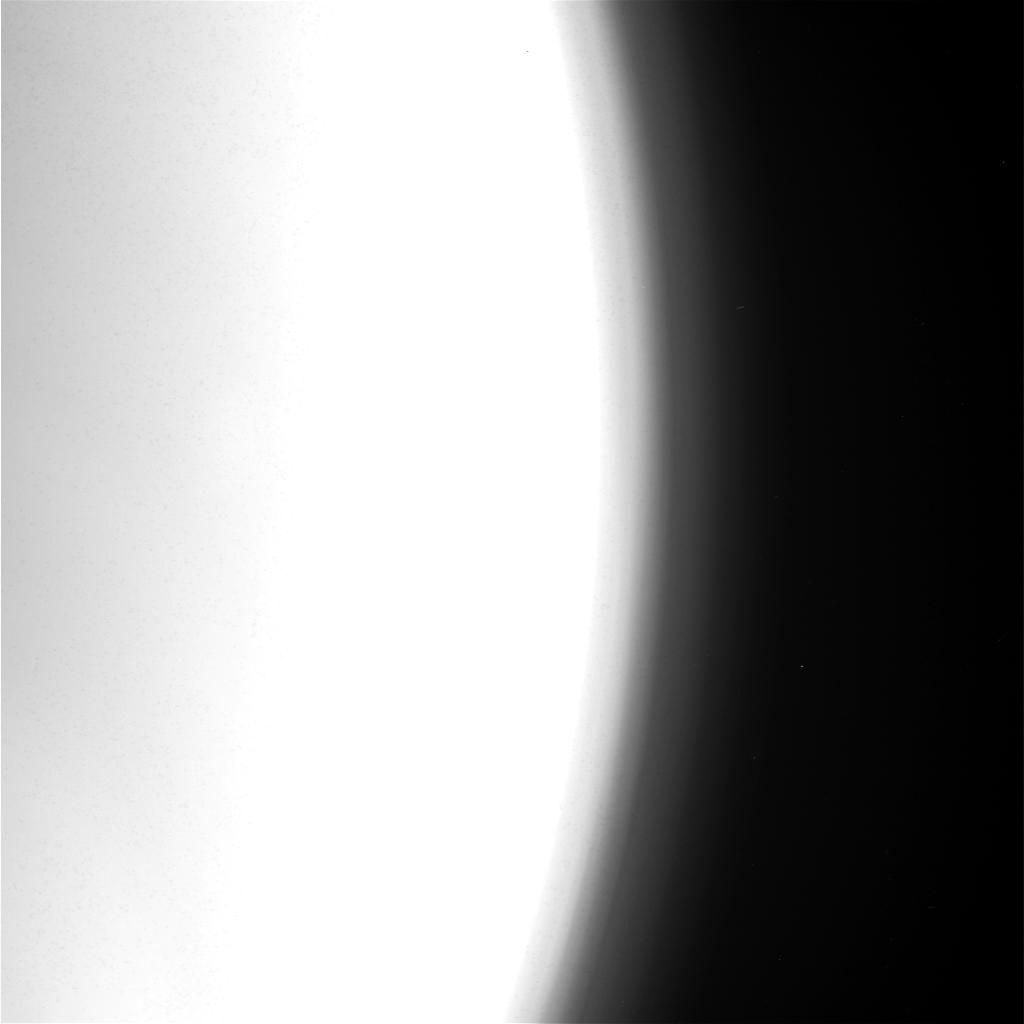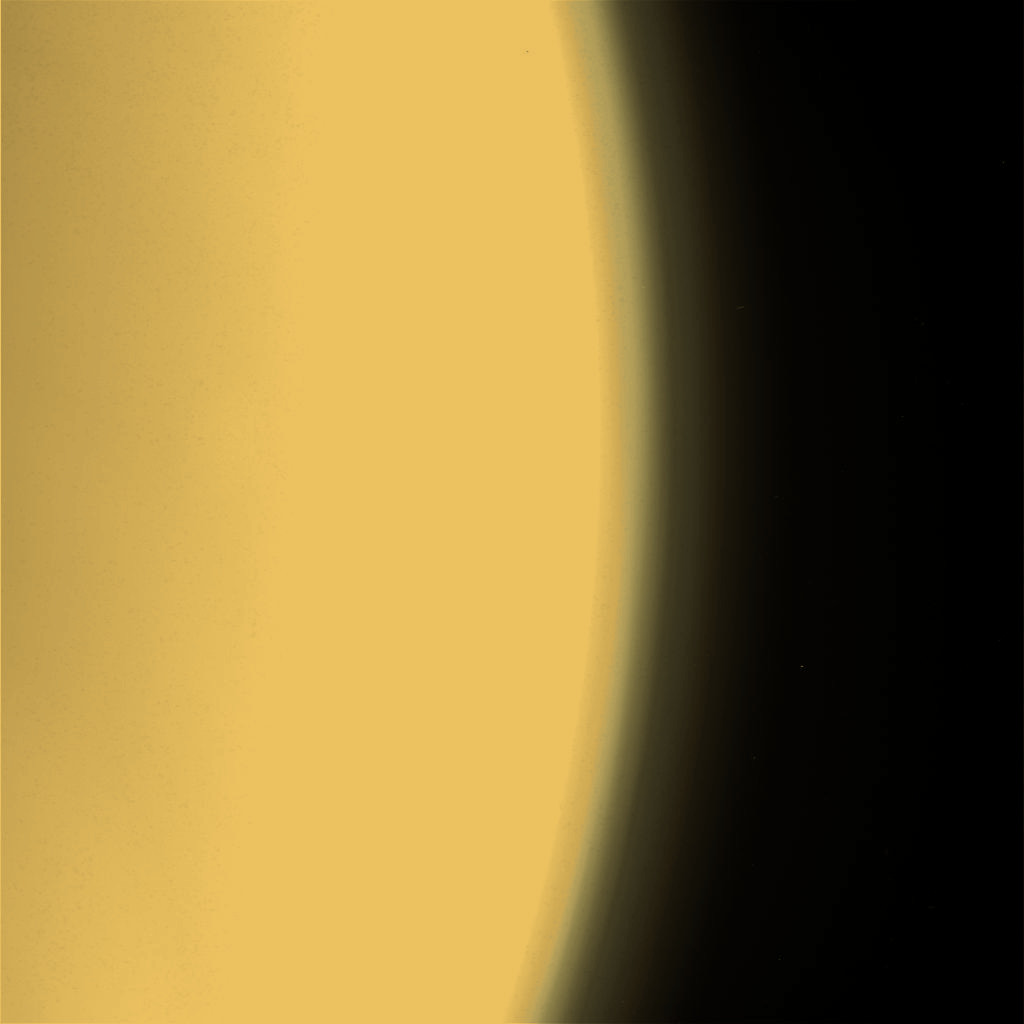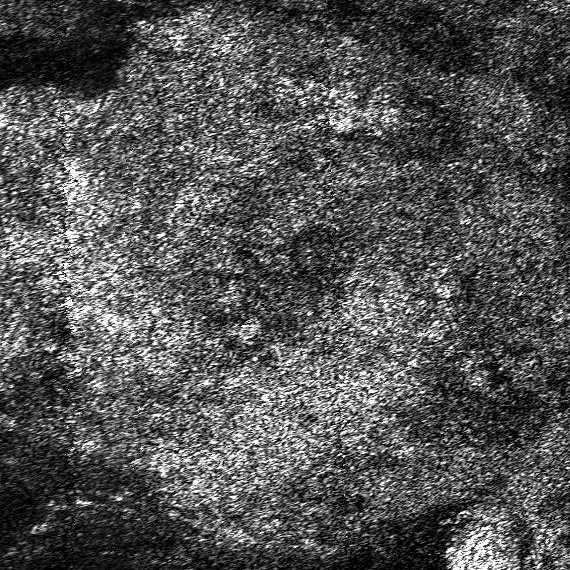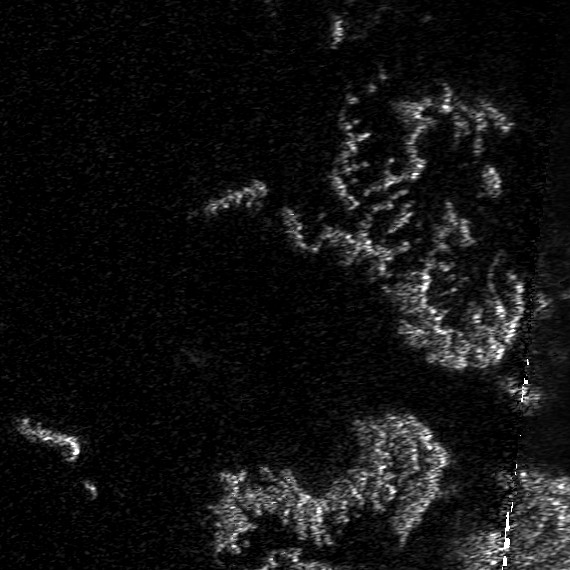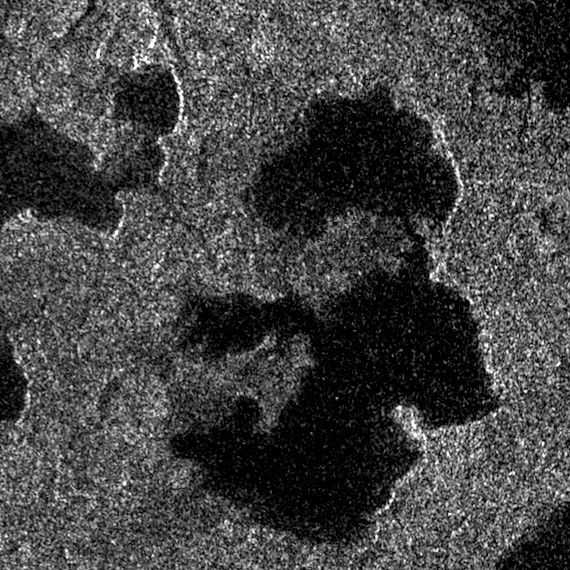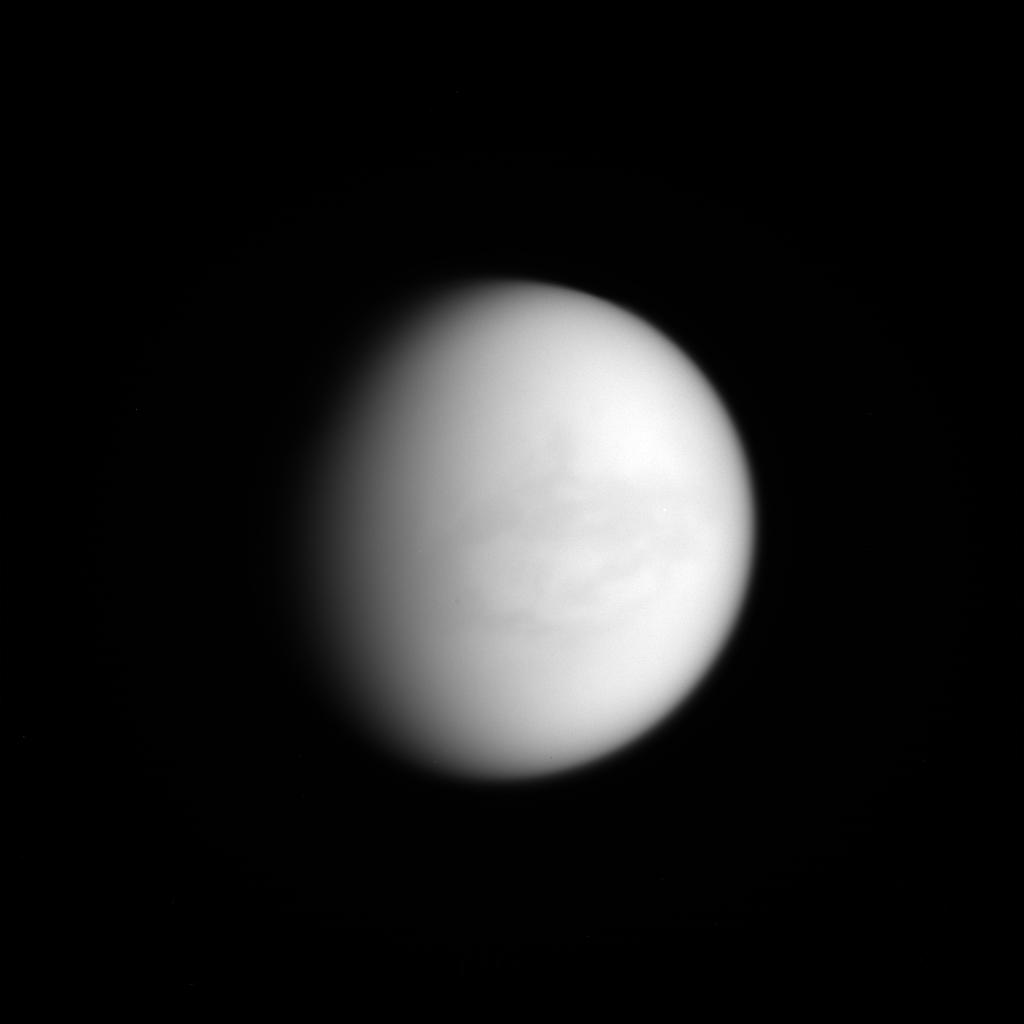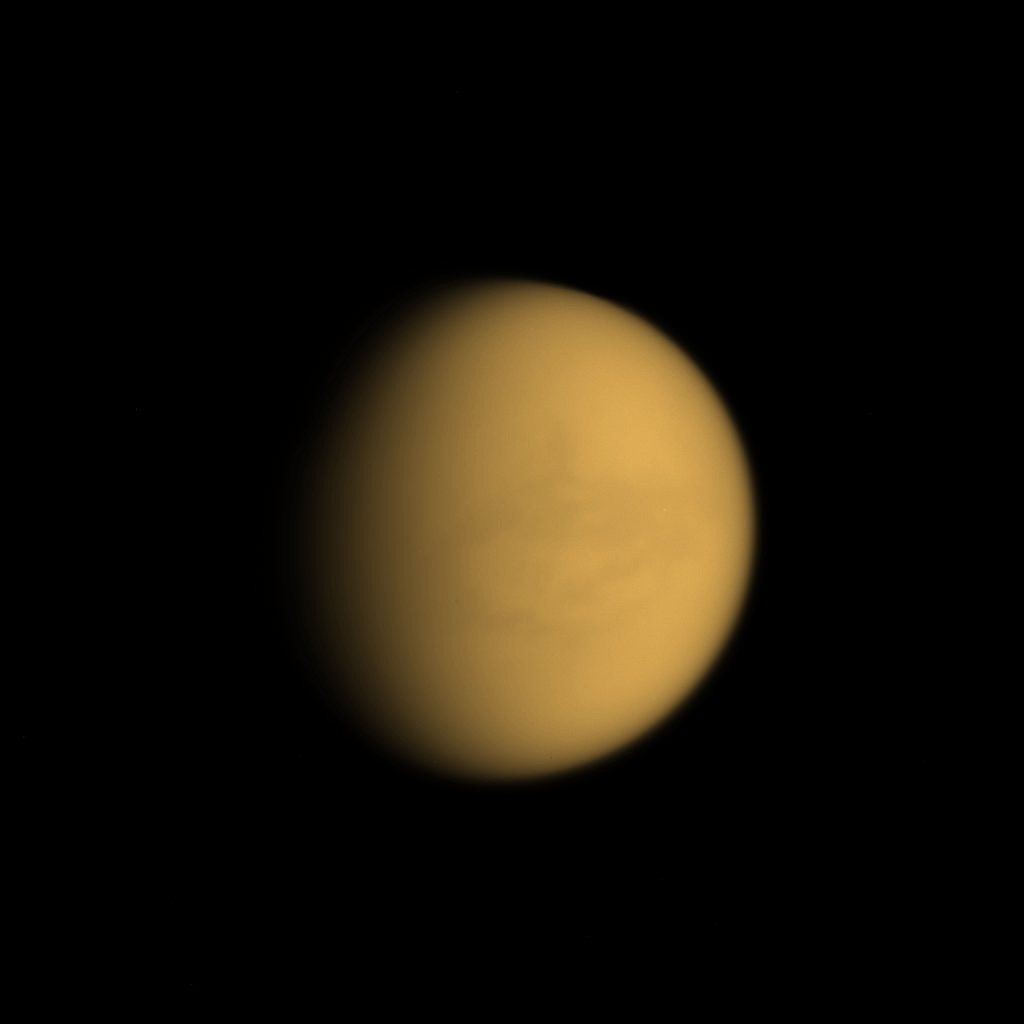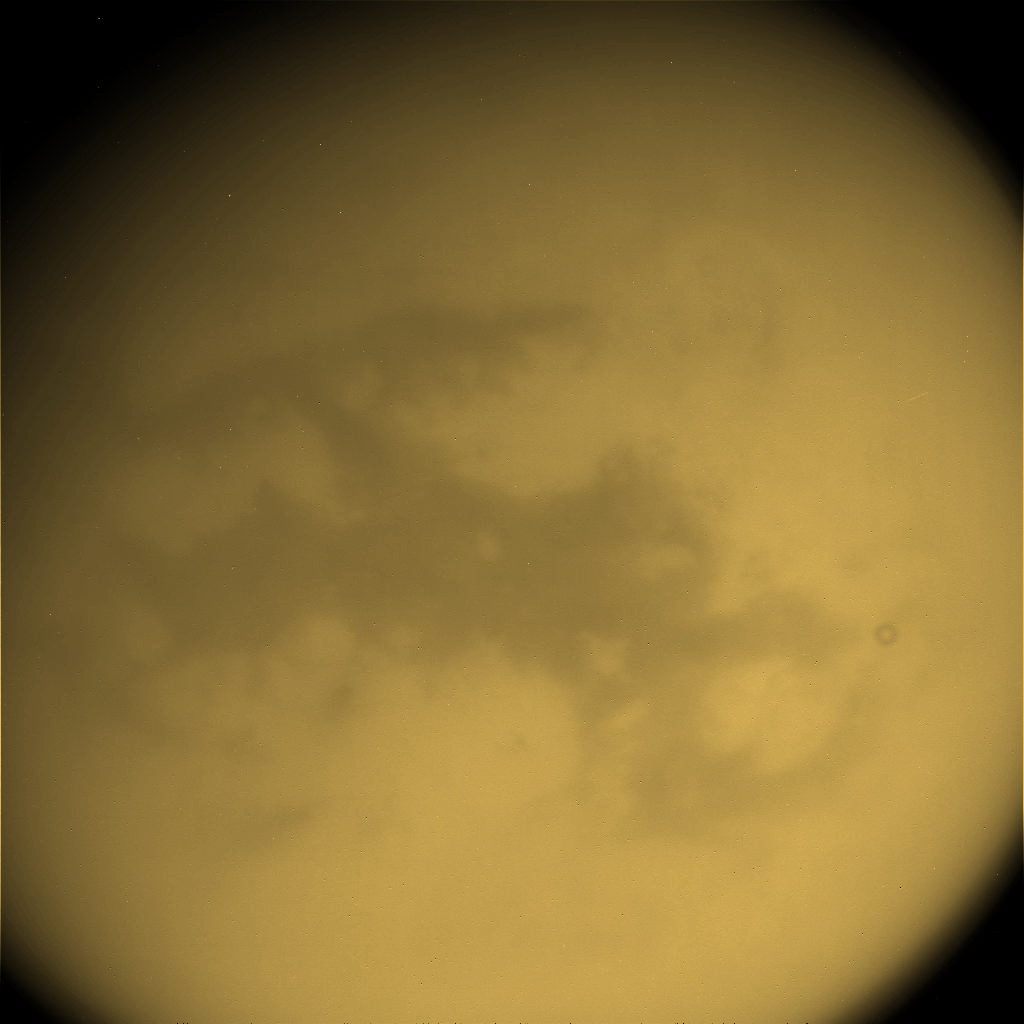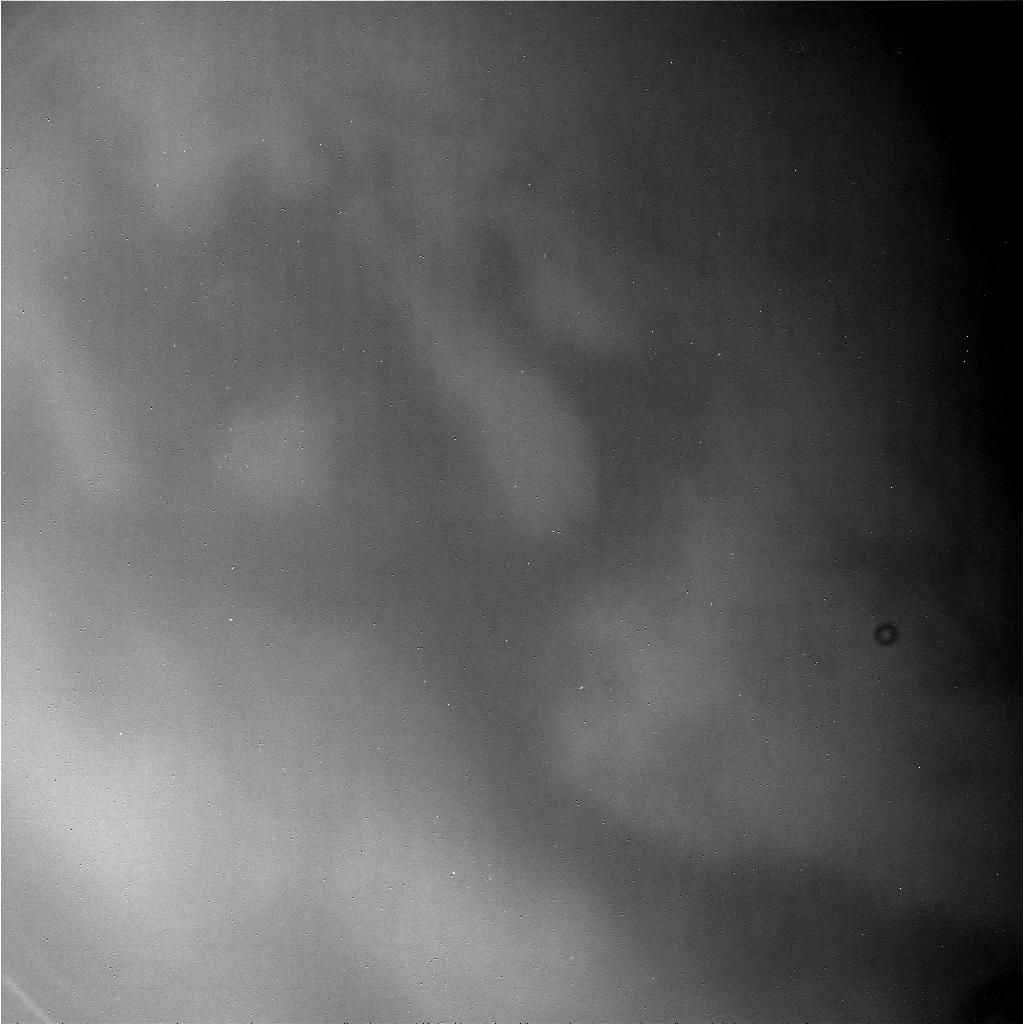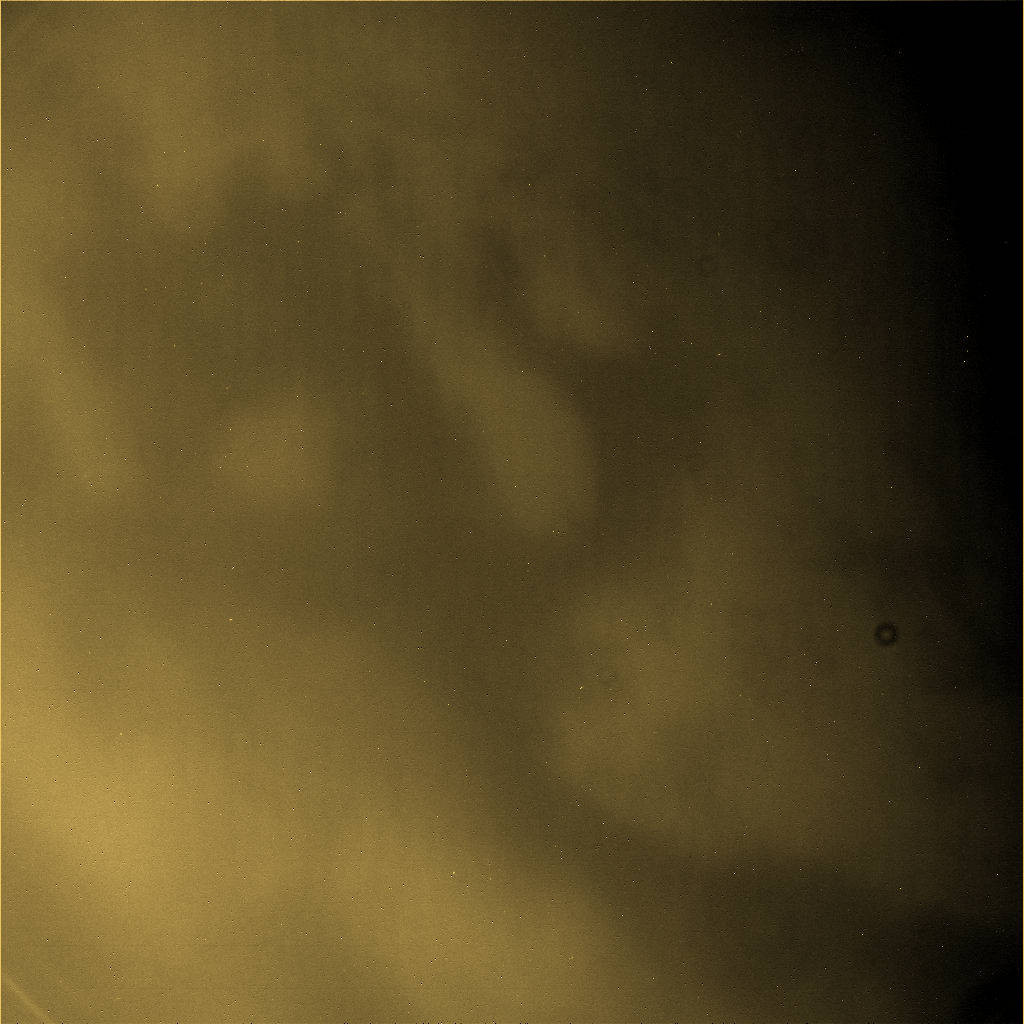|
The image above represents a radar portion of Ligeia Mare, a famous pool of liquid found in the high latitudes
of Titan's northern hemisphere. The original view whose file name is BIFQI39N235_D250_T092S01_V03.jpg was
obtained during the T-92 Flyby performed on July 10, 2013. Each side of the view represents about 100 kilometers
(about 62 miles). One can notice multiple islands whose shape is irregular. Some islands of Ligeia Mare may be
particularly unstable as the Mystery of the Magic Island may suggest. Some radar views of the same area of
Ligeia Mare reveal, indeed, new islands which have rapidly vanished. Many hypotheses have been advanced to
try to solve that mystery but the phenomenon of the Magic Island remains a mystery.
Credit for the original view:
NASA/JPL/Cassini Radar Team/PDS Image Atlas.
Montage credit:
Marc Lafferre, 2021.
|
